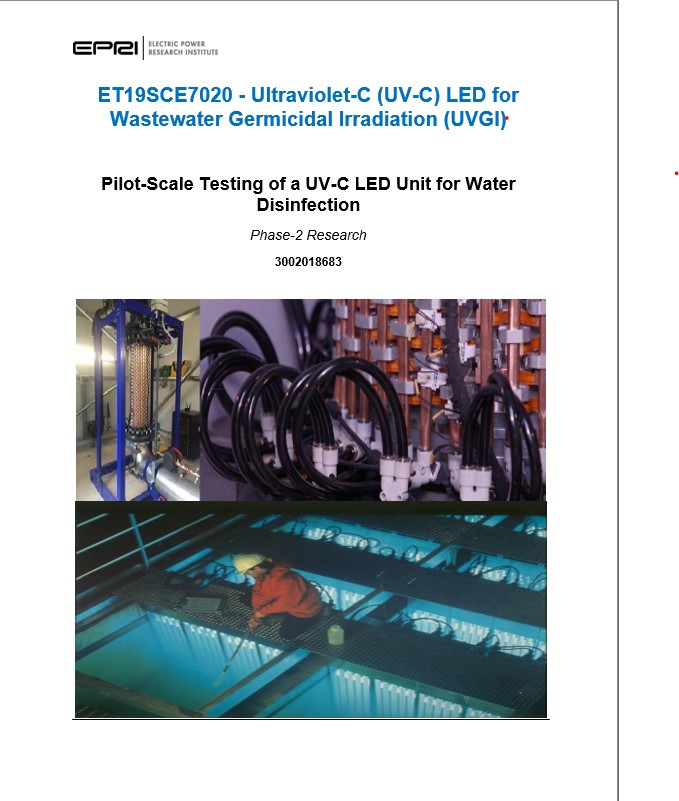Project Info
COMPLETE
 Project Title
Project Title
 Project Title
Project Title
Ultraviolet-C (UV-C) LED for Wastewater Germicidal Irradiation (UVGI)
Project Number ET19SCE7020 Organization SCE End-use Process Loads Sector Industrial Project Year(s) 2019 - 2022Description
Ultraviolet-C (UV-C) LED for Wastewater Germicidal Irradiation (UVGI)
Much like light-emitting diodes (LEDs) have revolutionized the general (visible spectrum) lighting industry, UV-C LEDs are set to rapidly replace conventional UV mercury vapor lamps in water disinfection and water reuse applications. Although it is generally accepted that UV-C LED technology can be used for various water disinfection uses, steps need to be taken to verify performance and determine scale-up factors to support technology transfer to the high-throughput levels of municipal drinking water and wastewater systems. To this end, EPRI aims to evaluate the disinfection performance, reliability, and energy use requirements of small- scale, UV-C LED pilot units against contaminants commonly found in municipal drinking water and wastewater. Does UV-C LED technology perform like conventional UV mercury vapor lamp systems in water disinfection applications?
Project Report Document
Loading PDF Preview...
